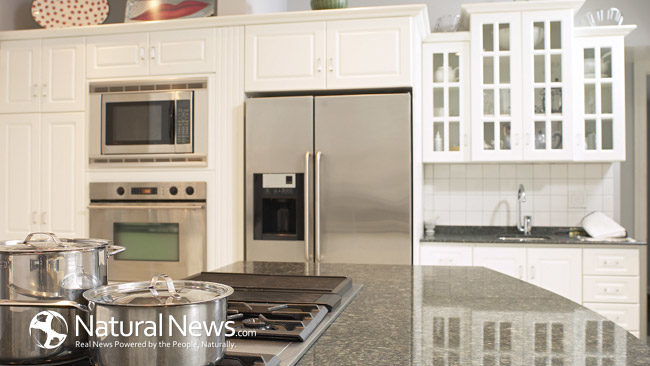When thinking about your family’s health in the home, there’s no better place to start than the kitchen.
According to the EVN, there are more than half a million kitchen accidents each year. That alarming statistic doesn’t even include illnesses resulting from poor hygiene or contaminated food.
Here are some things to think about to improve the health of your kitchen.
GFCI Outlets
As the following article looks at, among the 5 things you’ll learn with a home inspection course is that all kitchen counter outlets have to be GFCI outlets. These are special outlets that have a grounded pin. When appliances are plugged in, users can’t get electrical shock even if water or other liquids commonly found on kitchen countertops comes in contact with the outlet.
If you don’t already have GFCI outlets, have an electrician come in and switch out your old outlets.
You might not have GFCI outlets if your house was built before the newer code was introduced, or if the previous owner did the work himself. Either way, you’ll need to have it done before you can sell your home.
Storage Habits
The way you store kitchen supplies and food can impact your family’s health.
If you store heavy items in higher cabinets, you run the risk of injury if they fall down unexpectedly.
Keep those high shelves designated for bulk supplies like paper towels, napkins, paper cups, and linens and similar. Store heavier items that you don’t use often, such as turkey oven roasters, in the recesses of your lower cabinets.
Food storage should carefully considered in order to avoid contamination.
In the pantry, use glass storage jars or plastic containers instead of the packaging that food comes in. Grocery store food boxes and bags can’t be sealed enough to keep pests away.
In the refrigerator, seal half portions inside glass storage containers or wrapped tightly in cellophane.
These practices will help to prevent your food from going bad before you have a chance to eat it.
Food Preparation
Ideally, you should have separate cutting boards for vegetables, meat and poultry.
The meat and poultry boards should be made of plastic or another non-porous substance. The vegetable cutting board can be wood or another material. Choose differing models and colors so everyone in your family can tell them apart.
Clean your plastic cutting boards with a stiff bristle brush, hot water and soap after each use. Alternatively, run them through a dishwasher cycle.
Clean wooden cutting boards with a fresh clean cloth and some white vinegar. Allow to dry. Treat occasionally with beeswax to prevent cracks, which can harbor germs below the surface.
General Hygiene
A recent study done at Kansas State University uncovered some poor hygiene habits in the kitchen regarding the use of kitchen towels.
The study showed that cross contamination within the kitchen environment was associated with the common towel.
Study participants were observed handling cloth and paper towels before washing hands, and after washing hands perfunctorily under water. The towels then became harbingers of bacteria growth when they were not laundered the same day. Even paper towels can spread bacteria if they are used repeatedly and not discarded.
To keep your kitchen hygiene level the best it can be, wash hands with soap for at least 30 seconds.
Use a cloth towel dedicated for drying hands. One that has also been used to dry countertops or handle hot pots will already be contaminated. Use a fresh cloth every day.
An even better solution is to use disposal brown paper kitchen towels for the family to dry their hands on. These dispensers and refills can be purchased online or at big box retailers.
There’s no reason you can’t keep your home kitchen as healthy as a commercial restaurant kitchen.
Just keep these things in mind, and you’ll avoid many of the things that cause accidents and illnesses in the kitchen.
About the Author: Kate Supino is an advocate for whole foods and a healthy lifestyle.
Sources:
http://www.sciencedaily.com/releases/2015/03/150318144502.htm?utm_source=feedburner&utm_medium=email&utm_campaign=Feed%3A+sciencedaily%2Ftop_news%2Ftop_health+%28ScienceDaily%3A+Top+Health+News%29
http://home.howstuffworks.com/question117.htm
https://www.evndirect.com/shopping/study_guides.php?id=1703&type=2





